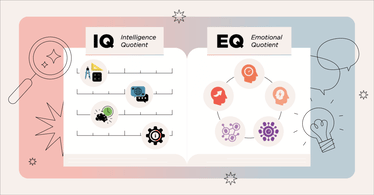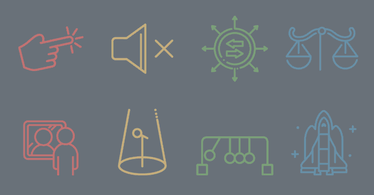How to Avoid Five Common Pitfalls in the Workplace
We all start out with the best of intentions. The new job we’ve just been hired for is going to be the best one we’ve ever had! Our plan is to go in early, work diligently and productively and surpass all expectations. And we really believe we can pull this off, at least until we encounter one or more lurking workplace pitfalls.
Knowing what to look for - and more importantly how to avoid these common pitfalls in the workplace - can help you deliver on your promise to make this your best job yet.
Emotional Hijacking
One of the most common and prevalent pitfalls that will occur in the workplace is the emotional hijack. According to Life and Psychology, it is defined as “the state when an individual's cognitions are overpowered by his/her emotions. When one occurs, a person stops thinking and starts reacting.
During a hijack, the wheels seem to fall off the wagon quickly, and things escalate negatively in a very short period of time. Emotional hijacking can also be summed up as losing control of a situation.
What makes a usually secure, in-control person lose it within seconds? Stress is definitely a factor, while other factors such as hunger, lack of sleep or external problems can help to escalate an emotional hijack.
When multiple factors such as these come together at the same time, a person can lose control rather quickly. In an emotional hijack, a person is prone to saying or doing something they’ll later regret so the key is recognition and avoidance.
If you feel you are in a situation where you begin to lose control, some quick remedies you can employ are to walk-away, breathe deeply or even internally count to ten. As elementary as that may sound, it buys you ten seconds to rethink the situation and recalibrate your response to it. Hijacks are quick-hitters.
Having ten seconds to respond to it can make all the difference between saying something you’ll later regret or keeping your cool (and your positive reputation in tact).
Conflicting Behavioral Styles
In any workplace, you’ll find people with different backgrounds and differing beliefs. Behavioral styles can also vary wildly in the workplace and often there is opportunity for conflict. Imagine a person who is dominant, such as a controlling leader that likes to work very quickly even if not thoroughly.
Now imagine a detail-oriented perfectionist that wants to ensure every detail is just so before completing a task. Chances are these people may find it difficult to work together regularly.
Perhaps this leader who moves fast needs to work with a slow and steady worker who prefers an even keel over a stress-induced environment. See how that might end up? Conflict may again be on the horizon.
Pair that detail-oriented perfectionist mentioned above with someone who wakes up in the morning with the sole purpose of interacting with other human beings.
This person loves to talk and tell stories, sometimes losing track of the original story because they tend to go off on tangents. Might the task-oriented perfectionist grow tired of the people-oriented person who always has a story?
Now consider the controlling, fast-paced leader working with the conversationalist. The leader is used to having the stage but can’t get a word in edgewise in the presence of the story teller. The leader wants to get in and get out of a conversation quickly so he can move onto the next task while the conversationalist loves to chat with anyone she sees. Might we have a problem here?
The key to avoiding conflict with people possessing differing behavioral styles is to first identify the different styles and be very aware of the other person’s communication preferences. Awareness is half the battle.
Just as speaking the same language is necessary for understanding, communicating in a way that people want to be communicated to will make life much easier and likely help you gain advantage when working with that person.
Conflicting Drivers
Just like behavioral styles are ingrained, so too are drivers that dictate why people do what they do. Drivers can be conflicting, just like behavioral styles, and again identification and understanding play an important role in having successful interaction with other people.
Picture a person who is driven by beautiful surroundings. Being in an environment surrounded by beauty is very important for that person and the cost to achieve that beauty may be of no consequence to them.
They may be working with someone who is driven by practical results and maximizing their bottom line. These two people may conflict because one is watching the bottom line while the other is continually redecorating the office.
Some people are driven by tradition and a defined system for living. This can conflict easily with people who love to try new ideas and mix things up to gain a new experience.
They need to find common ground to be able to coexist. The traditionalist needs to be open to new thoughts and the person who lives for new ideas needs to agree not to change things just for the sake of change.
Figuring out what drives a person can help to explain what is important to them. Once you understand a person’s drivers, you open a book that tells a story about who that person is. Armed with this information, you’ll know what makes this person tick and how you can best work with them.
Lack of EQ
Most people put on a good front when not in a state of pressure. But add multiple tasks, deadlines, discord and other triggers and someone outwardly calm and collected can begin to change rather quickly.
EQ, also known as emotional intelligence, is an individual’s ability to sense, understand and effectively apply the power and acumen of emotions to facilitate high levels of collaboration and productivity.
While a select few may be naturally blessed with a high EQ, most people have to work very hard to achieve this. Identifying triggers, being aware of stress, avoiding negative situations and toxic people are all ways to help build up a person’s EQ.
Looking at the world through an empathetic lense is a great way to boost one’s EQ relatively quickly. Always put yourself in another person’s shoes before reacting. Learning to not only be self-aware but knowing how to self-regulate, especially under stress, will also raise a person’s EQ.
Research indicates that successful leaders and superior performers have well developed EQ skills. This enables them to work well with a wide variety of people and respond effectively to the rapidly changing conditions in the business world.
Lack of Self-Awareness
According to pathwaytohappiness.com, self awareness is having a clear perception of your personality, including strengths, weaknesses, thoughts, beliefs, motivation, and emotions.
Self-awareness, like most things, is a learned skill that takes time to develop. Being aware of your voice tone, facial expressions and words you use regularly are things to consider when trying to improve your self-awareness.
Honing your self-awareness skills will benefit you in other areas. You’ll be better able to avoid emotional hijacks and situations that could negatively impact your EQ.
Final Thoughts
These various pitfalls all occur regularly in conjunction with each other. Therefore, it’s not all about understanding one or two; you need to look out for all of them. Awareness is step one and understanding is next.
Once you have these tools, applying what you know one day at a time will help you avoid pitfalls in the workplace and put you on your path to success.

Dave Clark
As both a writer and a musician, Dave Clark enjoys exploring areas where he can express his creativity, which is influenced by his strong Harmonious Driving Force.


/Lessons%20from%20the%20Hundred%20Acre%20Wood%20that%20can%20be%20Applied%20to%20the%20Modern%20Workplace.png?width=374&name=Lessons%20from%20the%20Hundred%20Acre%20Wood%20that%20can%20be%20Applied%20to%20the%20Modern%20Workplace.png)


0 Comments